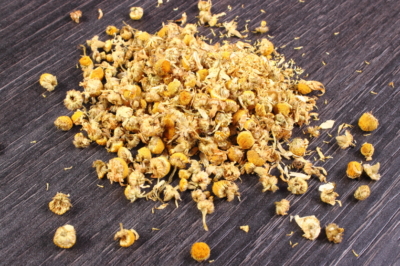Chamomile is one of the oldest medicinal plants used by humans, its use is documented as far back as the early Stone Age. The medicinal herb can be used in many ways, but it is mainly used internally and externally for inflammations and problems of the gastrointestinal tract. There are many different types of chamomile, which are outwardly very similar, but have no medicinal properties. Learn by which characteristics you can recognize the true chamomile.

Contents
Collect chamomile
Chamomile is widespread throughout Europe and grows both at mountainous altitudes up to about 1,600 meters and in the lowlands of northern Europe. You can find the fast-growing herb on sunny and warm sites on field margins, roadsides, on meadows and fields, on walls, fallow land and rubble sites. However, it is important not to pick wild chamomile carelessly, because many fields and meadows are treated with pesticides and other harmful chemicals. Chamomile treated in this way should not be used as a medicinal plant, as should plants growing close to busy roads.
The right time to harvest
The flowering period of chamomile lasts from about May until September, whereby you should collect the flower heads in June / July if possible – the content of the valuable essential oils is highest when the flowers have already had some time to ripen, but are also not yet overripe. You can recognize the optimal time by the fact that about two-thirds of a chamomile population has already blossomed, but a few buds are still closed.
Characteristics of the true chamomile
You can distinguish true chamomile from other chamomile species by the following typical characteristics:
Growth height up to about 50 centimeters, depending on soil conditions also less possible (many species of dog chamomile grow significantly larger)
a strong scent of chamomile (in contrast to the very similar but odorless false chamomile)
a concave curved flower base with drooping leaves
linearly arranged lingulate leaves with smooth edges (especially the leaves of dog chamomile have a slight serration)
The most important distinction is the following: Use a sharp knife to cut through a flower base from top to bottom. it should be more or less hollow inside. Both false chamomile and dog chamomile tend to have flat, filled flower heads.
Tips & Tricks
To prevent confusion and avoid contamination with pesticides and the like, why not grow the False Chamomile in your own garden? You can also simply collect ripe flower heads in nature and simply drop them in the garden – they virtually sow themselves.









